What’s the difference between Hong Kong pineapple bun and Japanese melon bread?
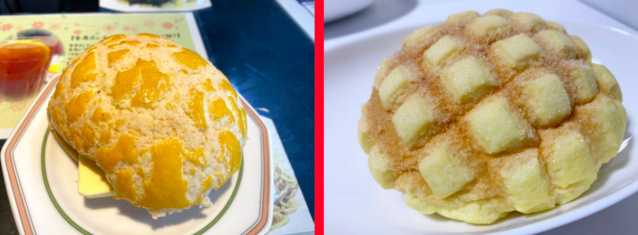
P.K. Sanjun gets schooled on all that is good and carbs.
Firm and sugar-crusted on the outside but soft and airy on the inside, melon pan, or melon bread, has won the hearts of many folks domestic and abroad despite being relatively unhealthy. But did you know there are bread variations across Asia that get mixed up with Japanese melon bread? P.K. Sanjun, who’s always down to consume anything, was determined to diversify his knowledge on buttery buns, especially after a misunderstanding with Hong Kong’s famous pineapple bun.
▼ Ah yes, I miss those days of my childhood where I would measure how much melon bread I could fit into my mouth in one bite.

It all began when P.K. Sanjun passed by a shop advertising Taiwanese melon bread. What caught P.K.’s attention was the thick slab of butter hanging out from the Taiwanese melon bread. Our intrigued foodie reporter immediately stepped inside to taste-test this novel treat.
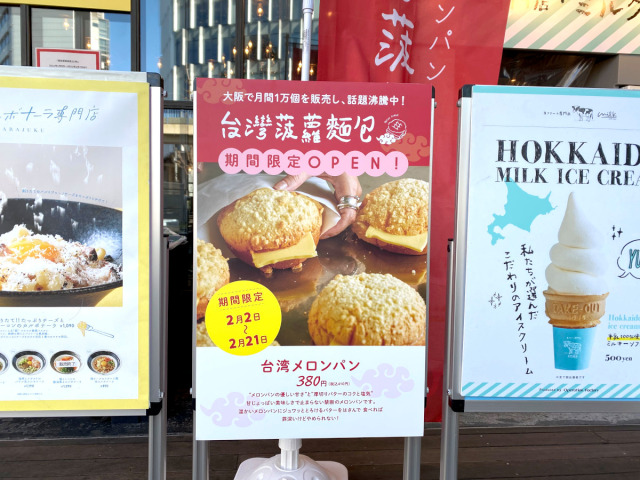
Truthfully? It wasn’t great. The oiliness of the butter and the cold bread didn’t come together taste-wise or texture-wise. While he wasn’t gagging after finishing it, P.K. simply assumed this was another way of eating melon bread, and perhaps he just wasn’t used to it.

The Taiwanese melon bread left such a strong impression on P.K. that he also decided to try his hand at making his own. After all, our curious reporter’s limits are only dependent on how much his stomach can take.
▼ Just bread and butter, right?
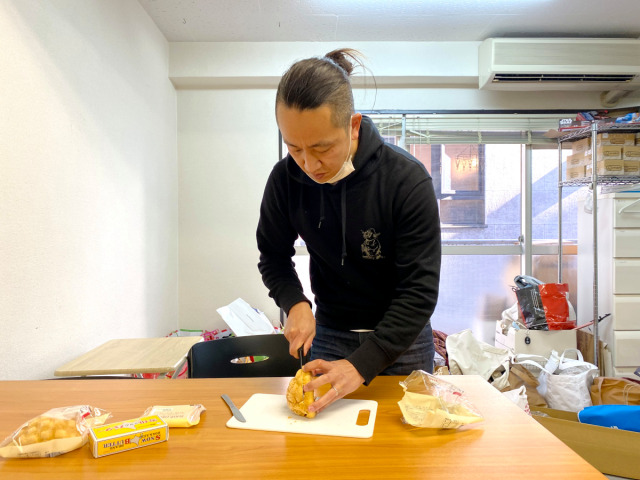
▼ Voila, done in a jiffy! Perhaps it’s time for Tokyo’s culinary scene to accept P.K. as one of their finest…
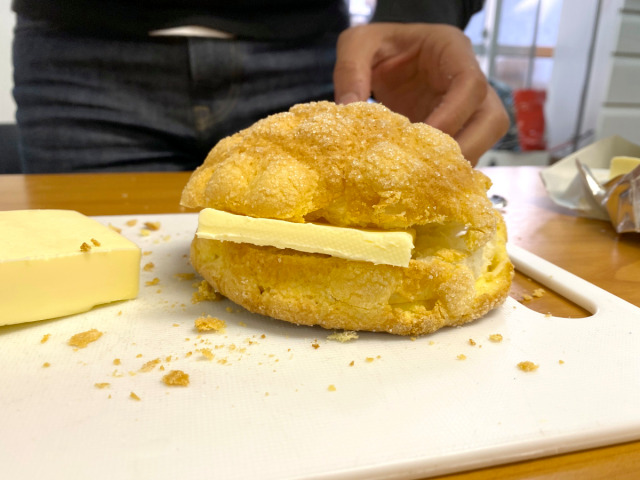
In earnest, P.K. posted about his experience online only to be alerted by a kind friend who loves Taiwanese culture that what he ate and made was not in fact Taiwanese melon bread.
▼ Say that again? It’s not?
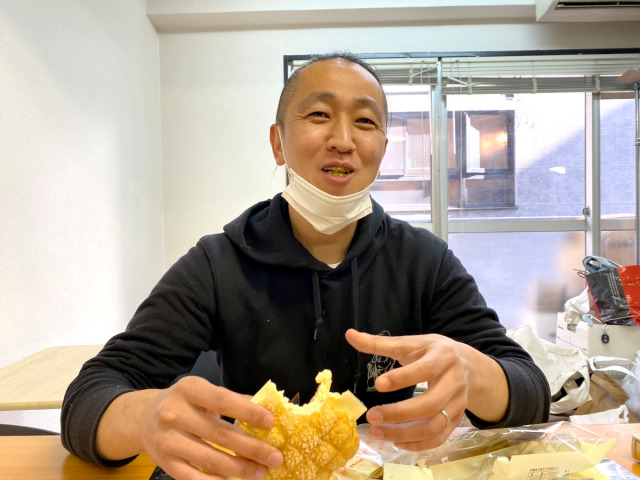
Though disappointed, rather than doubling down, P.K. admitted to his ignorance. And instead of being crestfallen about his mistake, he was determined to make things right and consulted his kind friend right away. After all, what is a misunderstanding but an opportunity to be accountable and learn?
P.K.: So what do you know (about this “Taiwanese melon bread”)?
Friend Who Loves Taiwan: The one with butter stuffed in the middle, right? That kind of melon bread is actually from Hong Kong.
P.K.: Oh, really?
Friend Who Loves Taiwan: I mean, a lot of food stalls in Taiwan sell them, but among Taiwanese people, they see it more as a Hong Kong speciality.
P.K.: I see.
Friend Who Loves Taiwan: Oh yeah, and in the article you wrote, you mentioned the bread is called boh loh yau (in Cantonese, or “pineapple bun with butter” in English.) Boh loh means pineapple, but Hong Kong pineapple bun doesn’t actually have pineapple, just like how melon bread doesn’t actually have melon in Japan. And by the way, in Taiwan, pineapple is known more as “feng li.”
P.K.: Oh, right.
Friend Who Loves Taiwan: Yeah. Honestly, I don’t know why the phrase “Taiwanese melon bread” has been trending, but I think at the very least Taiwanese people aren’t going to recognize this as “Taiwanese melon bread.” If you wanna refer to it in Japanese, “Hong Kong melon bread” is more fitting.
P.K.: Gotcha, thanks for that.
▼ Though the word for pineapple is “feng li” in Taiwan, the Mandarin word for “pineapple bun” adopts its phonetics from its Cantonese cousin, and is pronounced as “boluo bao.”
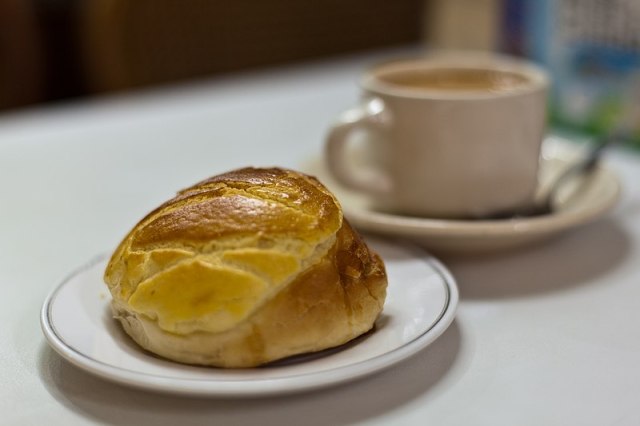
Frankly, the similarities between Japanese melon bread and Hong Kong pineapple bun stop at their shape, the fact they’re a type of buttery bun, and their sugar-laden outer crusts. They’re not even related in the slightest—the creation of Japanese melon bread can be traced back to its inventor, an Armenian baker named Hovhannes Ghevenian Sagoyan, who worked at Tokyo’s Imperial Hotel in the late 1910s. Hong Kong pineapple bun, on the other hand, has a more murky birthright, though many historians cite influence from Russian immigrants as a major factor.
Nevertheless, equipped with new information and a desire to rectify his misunderstanding, P.K. wanted to experience the taste of authentic Hong Kong pineapple bun for himself. But with closed borders restricting international travel, what was he to do? Luckily for him, another friend came through and recommended Hong Kong Chankichachanten, an eatery selling Hong Kong fare in Iidabashi, Tokyo, and P.K. beelined for the café.
▼ Fun fact: the term “chachanten” is a Japanese transliteration of the Cantonese word “cha chaan teng,” which is a Hong Kong-style café serving quick-to-eat meals such as this ham and egg sandwich below.
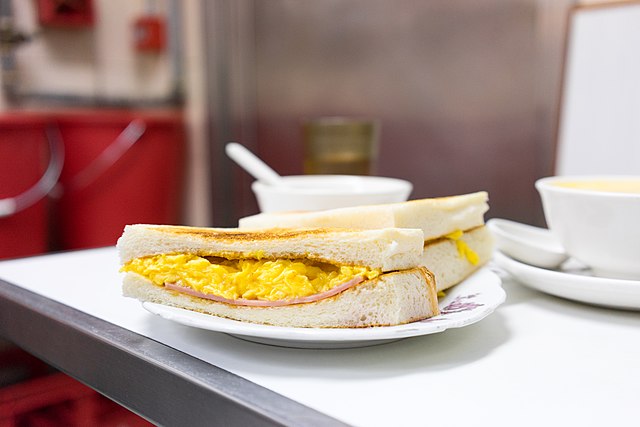
Upon receiving his order, P.K. was shocked at how different the pineapple bun looked compared to Japanese melon bread. With a softer and more flaky exterior, plus a luscious, melting slice of butter slotted into its split center, P.K. knew he was about to try the real deal.
▼ See that gorgeous crust? Pineapple bun gets its name from resembling the cross-hatched surface of a pineapple.
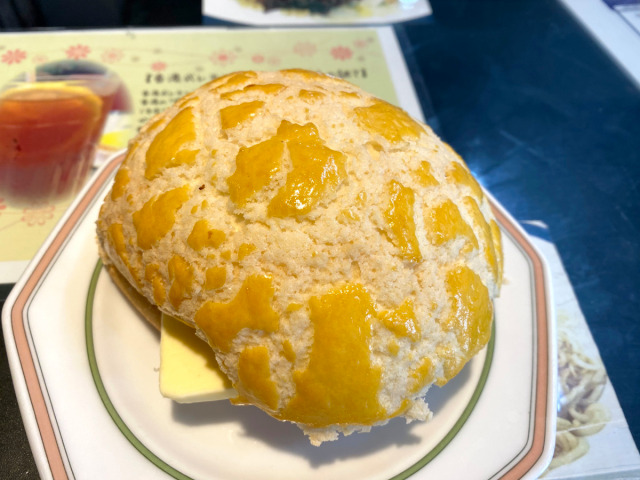
P.K.’s expectations were blown out of the water from first bite. It was entirely different from the Taiwanese melon bread he ate. While the Taiwanese melon bread tasted like someone stuck a slab of butter onto a slice of bread without spreading it, the Hong Kong pineapple bun was simply divine. The juices of the melting butter harmonized completely with the fragrant, warm bun. P.K. couldn’t help but wonder if this was the power of authenticity at work; Hong Kong pineapple bun was now definitely on his list of “top five snacks he would devour without hesitation.”
If you’re interested in trying out the Hong Kong pineapple bun for yourself, Hong Kong Chankichachanten is open from 11:30 a.m. to 10:00 p.m. everyday. But if Tokyo is far from you, and you don’t mind making do with just Japanese melon bread, take a peek at our guide breaking down which convenience store melon bread is the best of them all.
Store Information
Hong Kong Chankichachanten / 香港 贊記茶餐廳(ホンコン チャンキチャチャンテン)
Address: Tokyo-to, Chiyoda-ku, Iidabashi 3-4-1 / 東京都千代田区飯田橋3-4-1
Open 11:30 a.m.-10:00 p.m. (Lunchtime is 11:30 a.m.- 2:00 p.m.)
Open seven days a week
Top image: SoraNews24
Insert images: SoraNews24, Wikipedia/Dennis Wong, Wikipedia/City Foodsters
● Want to hear about SoraNews24’s latest articles as soon as they’re published? Follow us on Facebook and Twitter!
Credit:

0 comments:
Post a Comment